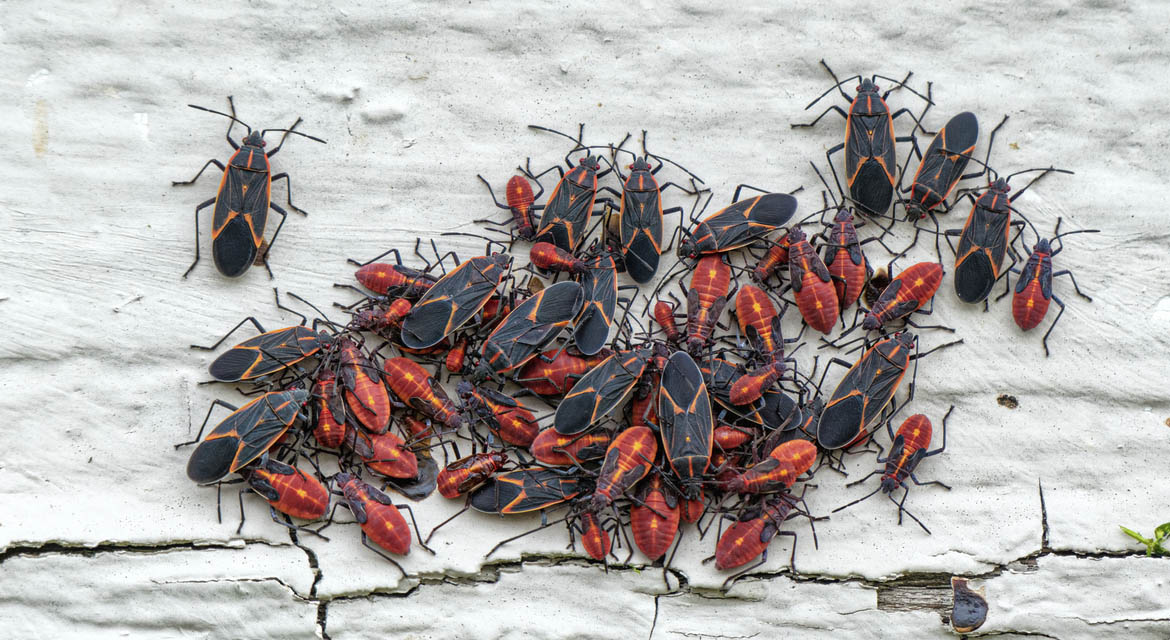Boxelder Facts & Information
Boxelder Overview
Boxelder bugs are a fascinating yet often troublesome group of insects that have gained notoriety for their distinctive odor and agricultural pest status. These shield-shaped insects belong to the order Hemiptera and are characterized by their flattened bodies, which are typically brown or green in color and marked with various patterns. Boxelders have a unique defensive mechanism, emitting a pungent odor when threatened, which serves as a deterrent against predators. They feed primarily on plant juices, piercing the tissues with their specialized mouthparts. While some boxelder species play beneficial roles in natural ecosystems, many are agricultural pests, causing damage to a wide range of crops, including fruits, vegetables, and grains. Managing boxelder infestations can be a challenge for farmers and gardeners, making these insects a subject of both fascination and frustration in the world of entomology and agriculture.
What do Boxelders Look Like?
Boxelders are easily recognizable by their distinctive appearance. They have a shield-shaped body, which is typically flattened and somewhat elongated. Their size can vary, but most boxelders are about half an inch to three-quarters of an inch in length. The coloration of boxelders varies among species, but they are often brown or green, blending in with their natural surroundings. Their bodies may be marked with patterns or mottled with lighter and darker areas. Boxelders also have a pair of antennae and six legs, which are attached to their thorax. One of their most notable features is their triangular scutellum, a distinct shield-like structure on their backs, which partially covers their wings when at rest. Overall, boxelders have a characteristic appearance that sets them apart from other insects, making them easily recognizable to those familiar with their unique morphology.

Not the pest you are looking for?
Check out our pest library to see what other pests we have articles on
Stink Bug Pest Control
Boxedler pest control typically involves a combination of preventive measures and treatment options. To prevent infestations, homeowners and farmers often employ strategies such as sealing cracks and gaps in buildings, installing window screens, and using door sweeps to keep boxelders from entering indoor spaces. Additionally, practicing good garden hygiene, like removing overwintering sites and cleaning up plant debris, can reduce boxelder populations in outdoor areas. In cases of established infestations, chemical insecticides are sometimes used, but their effectiveness can vary. Biological control methods, such as introducing natural predators like parasitoid wasps, are also explored as eco-friendly alternatives. Research continues into more effective and sustainable ways to manage boxelder populations, given the agricultural and nuisance issues they pose.
Boxelder (Stink Bug) Resources
Are Stink Bugs Attracted To Light?
Complete Guide to Effectively Getting Rid of Stink Bugs: Everything You Need to Know
Do Stink Bugs Bite? A Comprehensive Look into Their Behavior and Impact
How to Prevent Boxelder Bugs from Entering Your Home: A Comprehensive Guide
Stink Bug Reproduction: An In-depth Exploration into Their Lifecycle and Mating Habits
Stink Bugs and Plants: A Comprehensive Investigation into Their Impact
The Complete Life Cycle of the Stink Bug
The Defensive Odor of Stink Bugs: Causes, Impact, and Intricacies
The Mysterious World of Stink Bugs: Odor, Defense, and Ecosystem Roles

